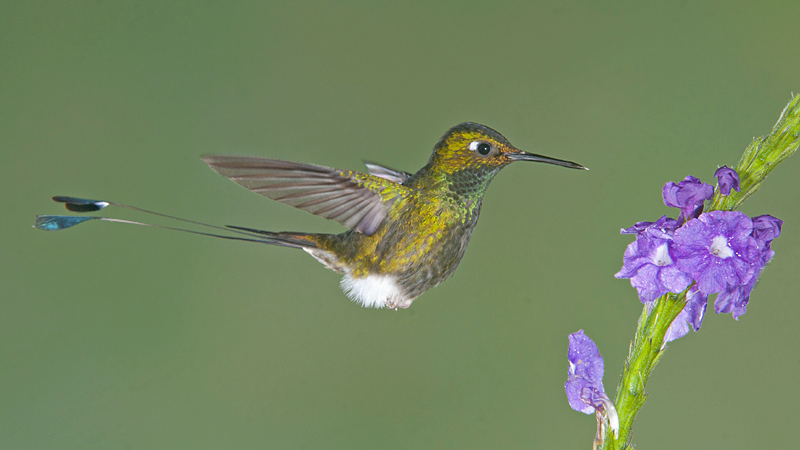After my trip to the Galapagos Islands, we took a few extra days and went into the cloud forests of Ecuador, mainly to photograph hummingbirds. Ecuador has 130 of the world’s 330 species of hummingbirds. I visited many of the well known lodges in the Mindo valley and ended up photographing about a dozen different species of hummingbirds and many different tanagers as well as other birds, in short the birds were incredible.
I ended up bringing my high speed flash system with me to Ecuador to shoot the hummingbirds. This is part of the reason that my 150 pounds of luggage consisted of only about 10 pounds of clothes and personal items and 140 pounds of camera equipment. The setup for this type of photography is extremely involved and consists of four flash heads, a background, light stands, all of the necessary cables, clamps, and cords as well as a flower for the hummingbirds to feed on, and of course, my camera. I use a high speed flash system that was made by a company called Fotronix, which unfortunately is no longer available. The Fotronix system is very powerful and produces a flash burst of about 1/20,000 of a second which is what is needed to stop the wings of a hummingbird in flight. Most of the people I traveled with were shooting Nikon SB800s and SB600s dialed down to 1/16th power. While this was not nearly as powerful as my system, but it seemed adequate for the job. I have to say that I was envious of the quick flash recycle times they were achieving with that setup.
I was pleasantly surprised at how much easier it is doing this type of photography with digital. Since digital cameras provides instant feedback, I can very easily confirm that all of the flashes are firing and are properly balanced. Back in the days of film, I wouldn’t have seen any potential problems until I received the film back from the lab which was obviously, less than ideal.
A male Empress Brilliant
A Velvet-purple Coronet
An Andean Emerald hummingbird in song
Another Empress Brilliant
And finally a couple of shots of the spectacular Violet-tailed Sylph







